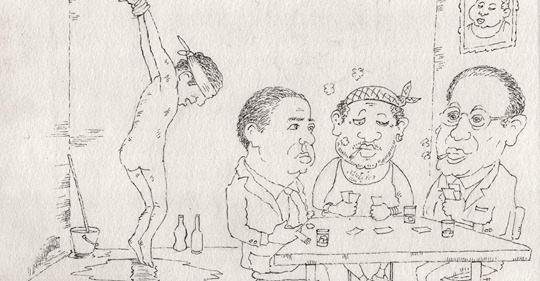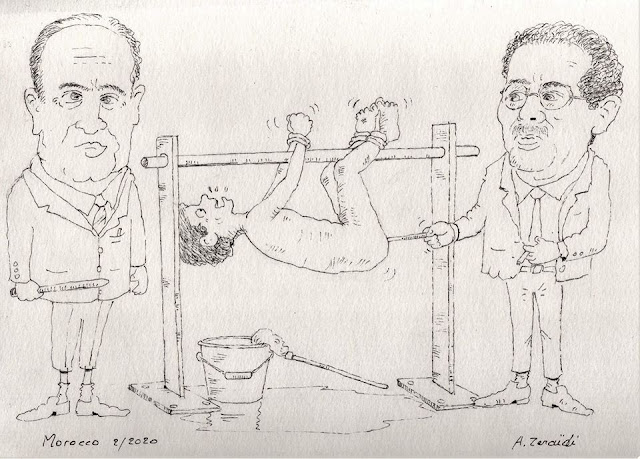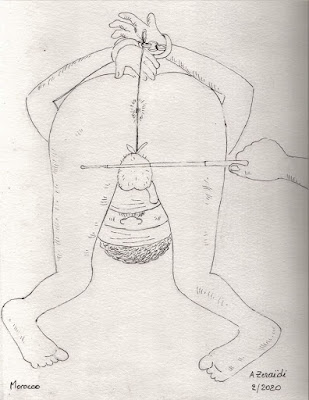Taking advantage of the state of containment caused by the covid-19 pandemic, the Moroccan government has tried to have Parliament approve a bill aimed at tightening the noose around the use of social networks, thus seriously damaging freedom of expression.
Fearing the closure of this area of freedom after the approval of bill 22.20 by the Government Council on March 19, 2020, the Sahrawi human rights activist, Mohamed Abdelmoula Dihani, wished to leave an audio-visual testimony on what he experienced in the Moroccan prison of Temara and denounce the practices of the Moroccan secret services aiming to instrumentalize the terrorist threat for political aims and to consolidate his occupation of Western Sahara.
In April 2010, Dihani was in the city of El Aaiun, the capital of Western Sahara occupied by Morocco. He had arrived from Italy on the occasion of the release of one of his close relatives.
On April 28, he went out to smoke a cigarette and was arrested by Moroccan secret service agents, handcuffed, boarded in a vehicle, and taken to the intelligence post at Mecca Avenue. From there, he was taken to Temara prison where, according to him, was the office of Abdellatif El Hammouchi at the time and where all the operations intended for the territory of Western Sahara were planned and the creation and alleged dismantling of terrorist cells in order to put pressure on certain countries and obtain their support, including the European Union and the United States.
In a cell, completely naked and handcuffed, his ordeal was illustrated by the Moroccan designer Abdellatif Zeraïdi (see attached images)
After 3 days of torture, he was taken to an interrogation office where there were Abdelhak Alkhiam, number 2 of the DST, and General Abdelaziz Bennani, commander of the southern region.
« You are going to tell us where you hid the weapons that you brought from Algeria or Mauritania, » they told him. « We have definite information that you have introduced weapons. We don’t want to keep you in prison. All we want is for you to tell us where these weapons are. We know where they are and we know who were with you and how you brought them in, « they said.
After denying all of these charges, he was returned to his cell for further cruel torture. They offered him 10 million DH ($ 1 million) if he agreed to work with them and play the game of recruiting, under the directives of the Moroccan intelligence services, a group of people who, according to them, had radical ideas and bring them to Western Sahara. The objective was to accuse this group of wanting to attack MINURSO or Saharawi personalities known for their defense of Moroccan theses and to commit a terrorist attack in the Saharawi territory and to present the Saharawis as a potential threat to the interests of the United States and Europe.
Following the condemnation by the international community of the violent repression which accompanied the dismantling of the Gdeim Izik camp on November 8, 2010, the Moroccan authorities announced on January 5, 2011, the arrest of 27 people, « including a member of al-Qaeda in the Islamic Maghreb ”, within the framework of the so-called“ Amgala cell ”, a Saharawi locality located on the border between the Sahrawi territories occupied by Morocco and those controlled by the Polisario Front. « This is the first time that Morocco has reported the arrest of an active member of AQIM on its territory, » said a dispatch from Radio France International.
After meeting with the defendants, Dihani says that they claim to have been manipulated by the Moroccan state, that they were far from carrying fundamentalist ideas and that the majority of this group was not practicing (they did not perform prayer).
Mohamed Dihani is convinced that his executioners intended to involve him in this masquerade intended to demonize the Sahrawis.
During his stay in Temara prison, Mr. Dihani met many innocent Moroccans who were in prison after being manipulated by the Moroccan secret services to carry out attacks in Morocco. Among them, perpetrators of the Casablanca attacks (2003) who assured him that the sponsor of this operation was not arrested because of his membership in the Moroccan security services.
Between December 2011 and March 2012, he also met Adil El Othmani, the alleged perpetrator of the attack on Café Argana (April 2011), in Marrakech who assured him that, as a collaborator of the Moroccan intelligence services, had been ordered to join the Islamic State in Iraq. In his attempts, he was arrested by the Libyan and Syrian authorities and released thanks to the intervention of the Moroccan authorities. Upon his return to Morocco, he was ordered to drop a bomb at Café Argana.
Dihani says he met a group of Moroccans charged with attempted bombing of the US base at Tan-Tan. While proclaiming their innocence, they claim to have been manipulated.
Annexes:
–
Tags: Western Sahara, Polisario Front, Mohamed Dihani, Morocco, terrorist threat, terrorism, manipulation, instrumentalization, Moroccan secret services,




Soyez le premier à commenter